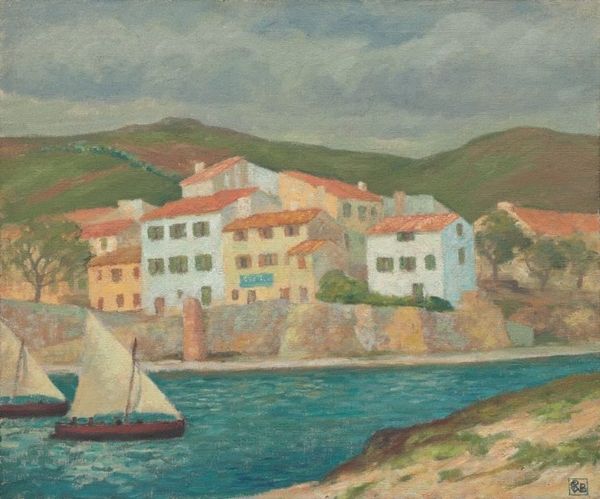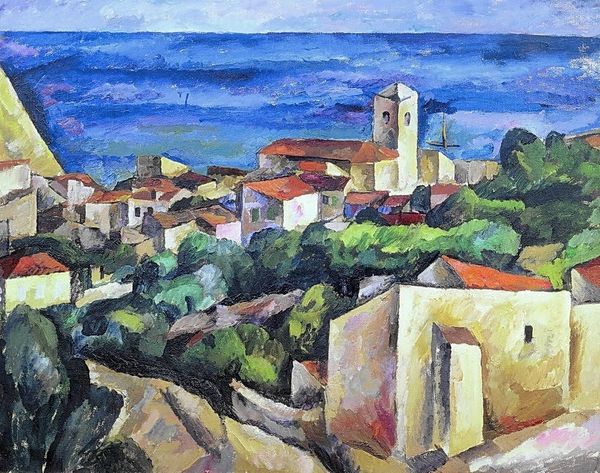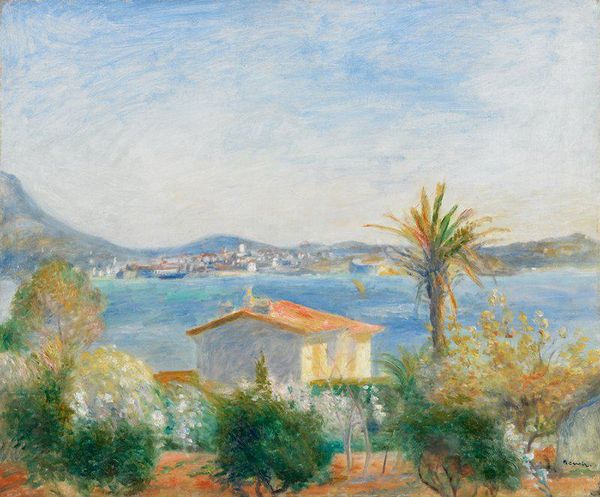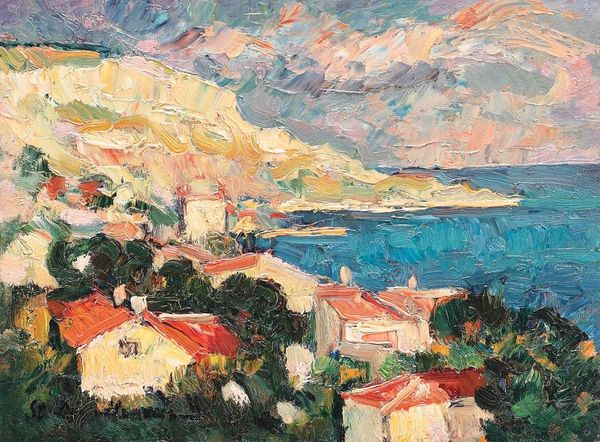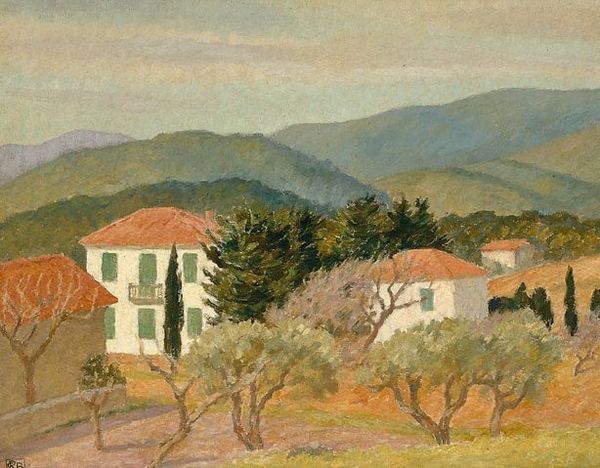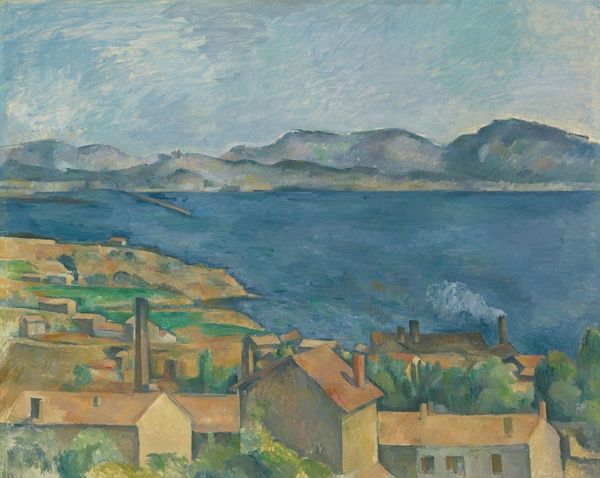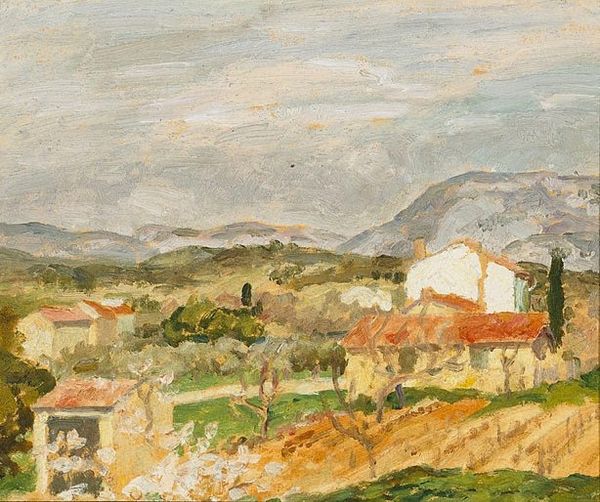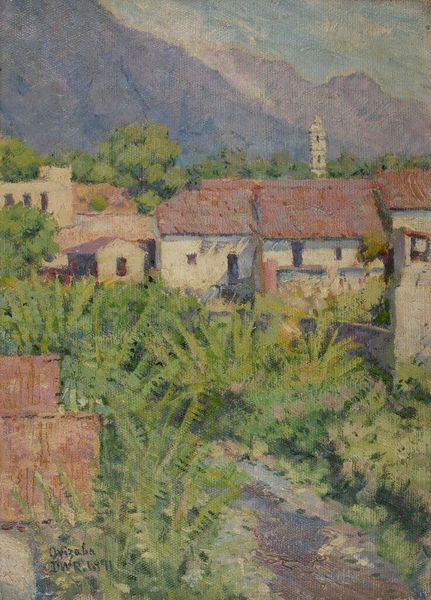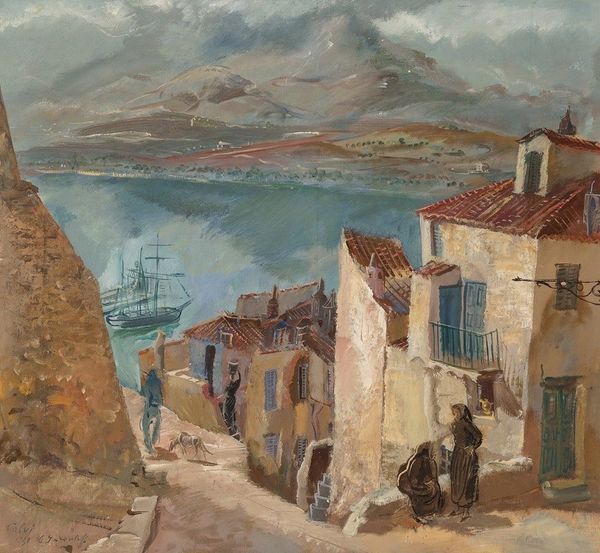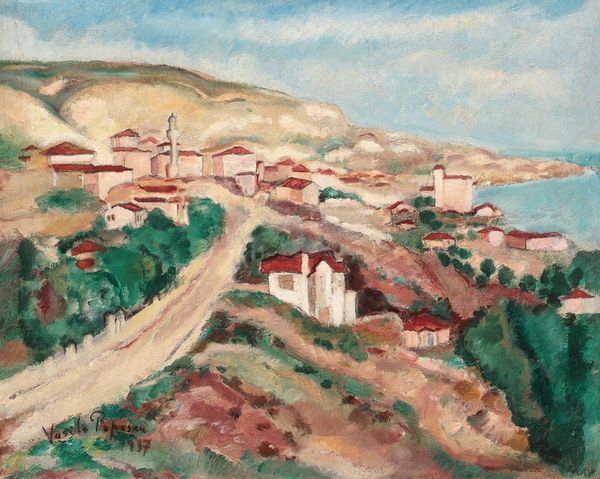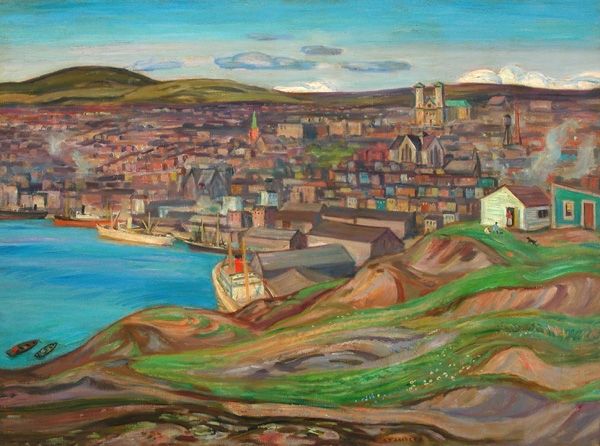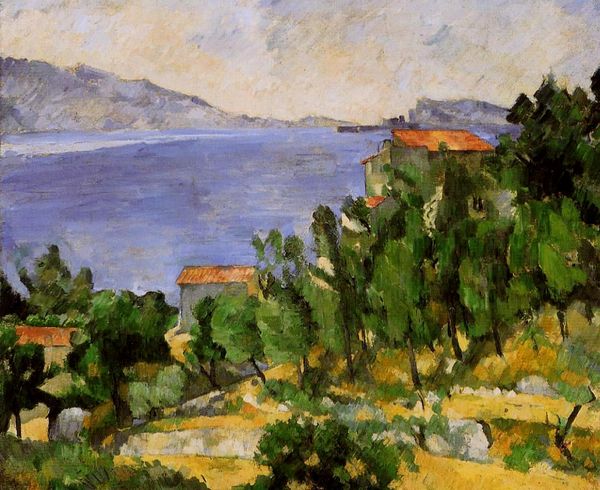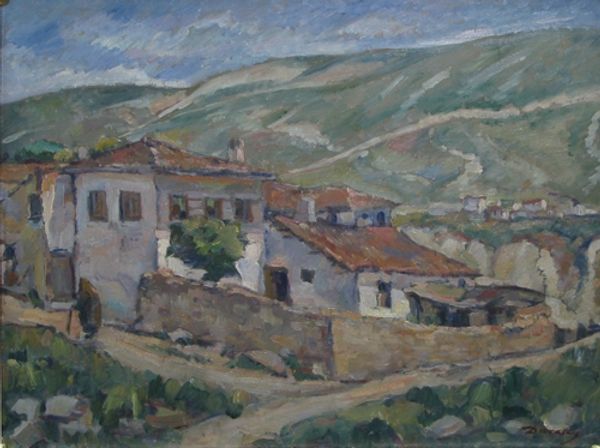
Copyright: Public domain
Editor: We’re looking at Rupert Bunny’s “Blue Day, Bandol,” painted in 1929. It's an oil painting depicting a coastal cityscape in the south of France, radiating a tranquil and almost dreamlike quality. What strikes you most about this work? Curator: What immediately grabs me is its reflection of the era's sociopolitical undercurrents through its idyllic veneer. Bunny, an Australian expatriate, paints a picture-postcard scene, seemingly detached from the interwar anxieties brewing across Europe. But is it truly detached? Or is this deliberate escapism, a privileged gaze seeking solace in beauty, while the world teeters on the brink? Editor: That's an interesting point. I hadn't considered the element of escapism. I was more drawn to the pure aesthetic pleasure of the composition, the interplay of blues and terra cottas. Curator: Precisely. Consider also how the plein-air style—traditionally associated with freedom and immediacy—might also symbolize the constraints of privilege. Who has the liberty to simply observe and paint en plein air? Whose stories are absent from this ostensibly universal vista? Can we even use the term universal to apply to art produced by white cis men when in fact many voices have been suppressed in art spaces for decades? Editor: So, you’re suggesting we shouldn’t take the painting at face value but rather examine its social context and the artist's positionality? Curator: Absolutely. We can appreciate the technical skill while interrogating the unspoken narratives—the power dynamics inherent in who gets to represent whom, and how. This seemingly innocuous landscape then becomes a powerful site for examining class, privilege, and the complexities of artistic representation in the early 20th century. Editor: I never would have thought to look at it that way. It really opens up a new dimension of understanding. Curator: Indeed. It's in this intersection of art history and contemporary theory that we truly unlock the potential for meaningful dialogue. Editor: Thank you. I’ll definitely be approaching landscapes differently from now on.
Comments
No comments
Be the first to comment and join the conversation on the ultimate creative platform.
